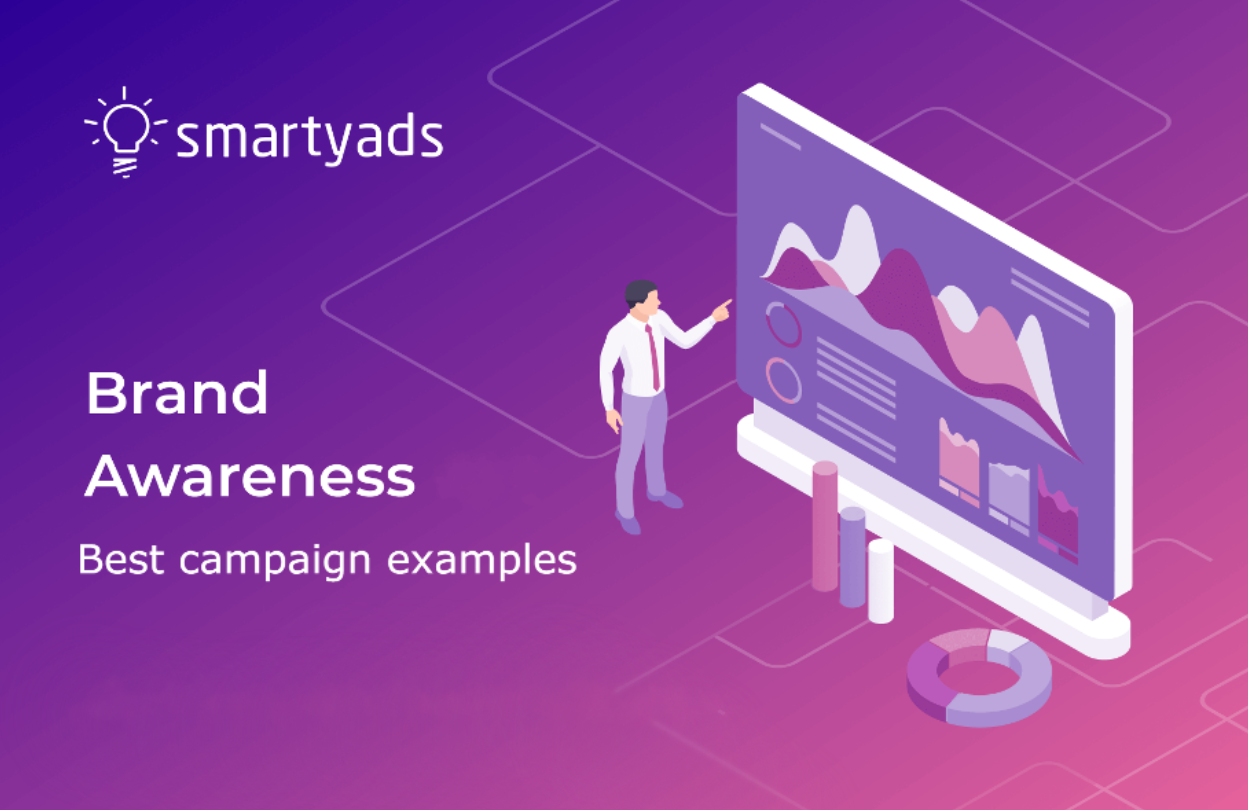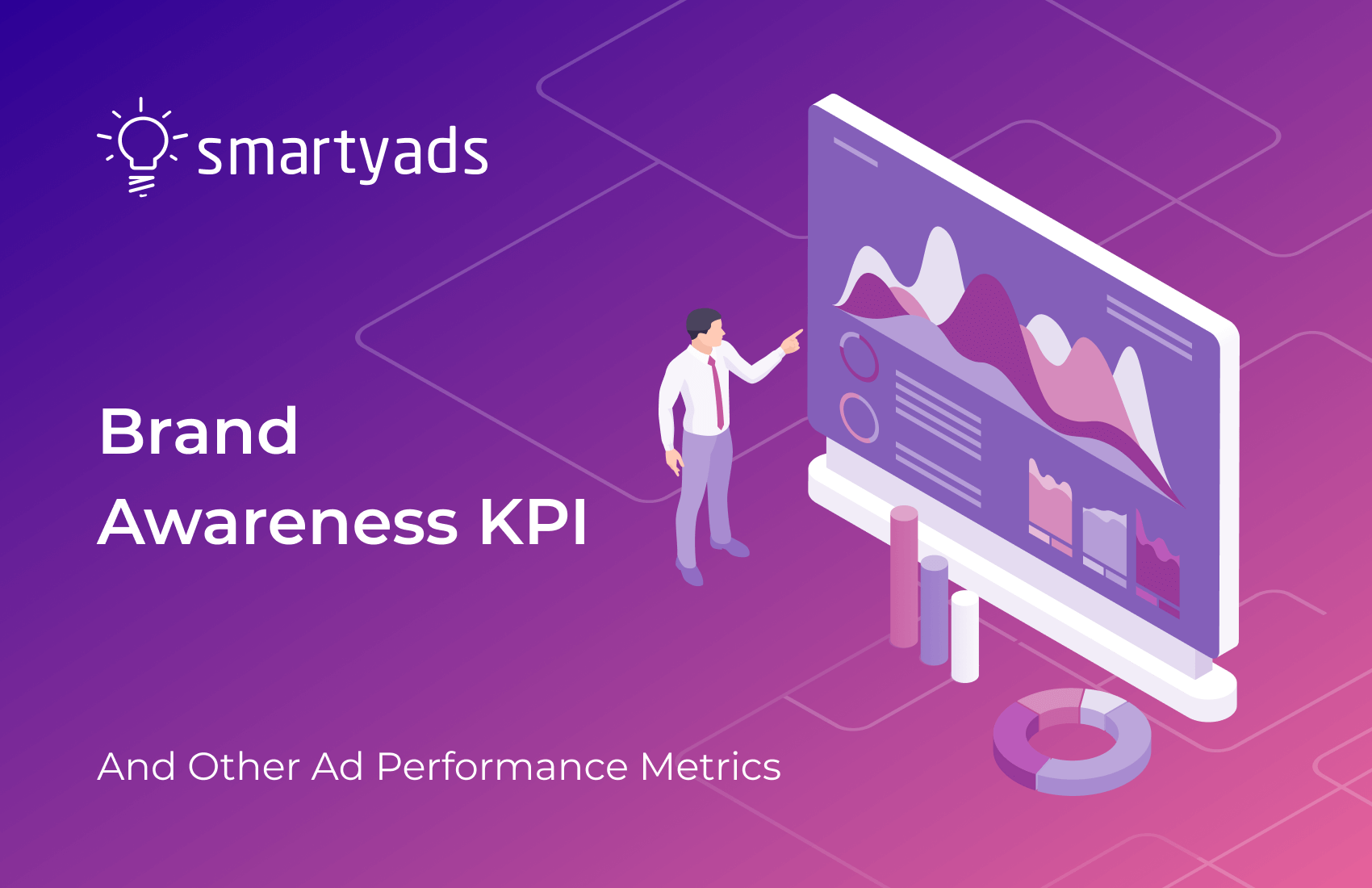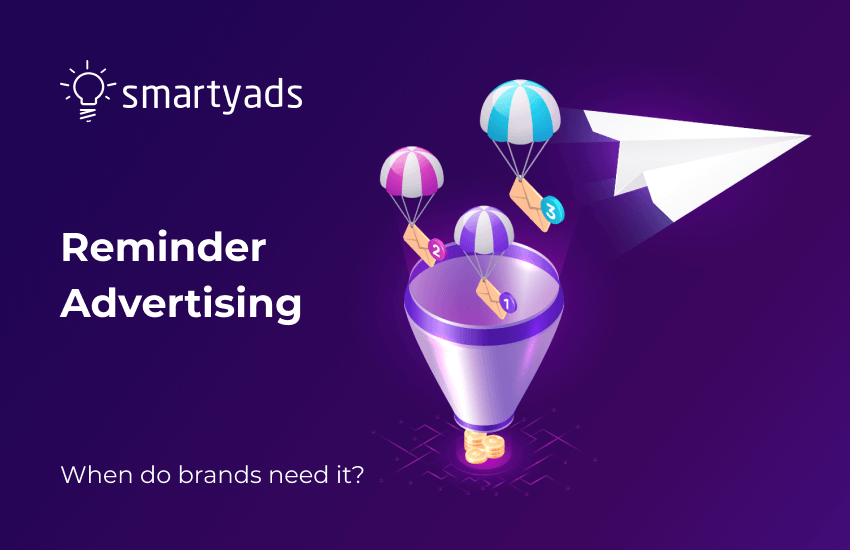Brand awareness advertising is paramount, especially for new companies that are just entering the scene. New companies need to advertise so that their ad messages effectively create familiarity with their offers and instill trust in their potential customers.
Measuring brand awareness may be a sensitive topic for many, but some marketers use extremely successful solutions to promote their products.
Key Takeaways:
- Brand awareness campaigns aim to improve recognition, recall, and positive associations with a brand through strategies like social media marketing, influencer partnerships, PR, and content marketing.
- Programmatic brand awareness campaigns leverage data-driven targeting and multiple formats (banner, video, native) to reach defined audiences efficiently and at scale.
- Effective tactics include joint campaigns, co-branding, sponsorships, affiliate marketing, guest blogging, podcasts, video content, and native ads, each offering different engagement benefits.
- Measuring impact involves tracking metrics such as impressions, website traffic, follower growth, and audience recall to adjust strategies for better results.
- Creative optimization, frequency capping, viewability tracking, and safe-traffic measures are key to sustaining campaign effectiveness.
- These approaches can be planned, executed, and optimized through SmartyAds DSP, enabling precise targeting and high-quality media placements.

What is a brand awareness campaign?
A brand awareness campaign aims to increase a particular brand's familiarity and recognition among its target audiences.
It aims to make potential customers aware of a brand's existence and to associate positive qualities with it.
Aside from this, there are types of brand awareness:
- Brand Recall: Customers can remember your brand unaided when thinking about a product category (e.g., thinking of "Coca-Cola" when considering soft drinks).
- Brand Recognition: People recognize your company thanks to visual elements.
- Top-of-Mind Awareness (TOMA): Your brand is the first one customers think of in your category.
- Brand Dominance: Customers can only recall your brand for a category, achieving complete market association.
Campaigns of this type may require:
1) Social media marketing
A social media marketing campaign is the practice of using socials for marketing reasons. It consists of creating and distributing content on platforms such as Facebook, Instagram, Twitter, LinkedIn, and others to interact with target audiences and to elevate the company's image.
2) Influencer marketing
Partnering with influencers in the brand's niche or industry to build brand awareness among their followers. You can set us up for influencer marketing campaigns by researching the relevant influencers in your niche.
3) Content marketing
It is defined as the practice of creating and distributing valuable, relevant, and consistent content to capture and hold a well-defined audience and potentially drive profitable customer action. It involves developing and distributing various forms of content, such as blog posts, articles, videos, infographics, podcasts, and social media posts, to educate, entertain, or inspire audiences and raise awareness in its field.
4) Public relation
Securing media coverage and generating a positive image through media relations, press releases, and events. Public relations is a key component of campaigns. PR involves building and maintaining relationships with media outlets, journalists, influencers, and other stakeholders to promote a positive image of a company, product, or service.
We can measure awareness using various metrics, such as the number of impressions (the number of times potential customers viewed the ad), increased website traffic, or social media followers.
Programmatic brand awareness campaigns
A programmatic brand recognition campaign constitutes a distinct variety of promotional endeavor aimed at amplifying visibility and acknowledgment among a specified cohort.
Such campaigns manifest in diverse formats, including banner advertisements, audiovisual promotions, and embedded advertising. The media buyer inputs exact audience criteria for their campaign into DSP (such as demographic traits, age range, OS, and habitual patterns), and the system then bids based on such criteria.
Harnessing the capabilities of programmatic systems, these campaigns deploy data-driven insights and computational algorithms to acquire ad placements instantaneously, securing visibility on digital platforms, mobile applications, and online communities frequented by the target demographic.
Why is brand awareness important?
Understanding and managing brand awareness marketing enables businesses to:
- Attract customers. The more people are exposed to your brand, the more potential buyers will progress through the purchase process.
- Accelerate customer movement through the funnel. Familiarity with your brand reduces hesitation and speeds up decision-making, as customers spend less time considering alternatives.
- Retain customers and increase their lifetime value (LTV). A familiar product with a good reputation that meets expectations for quality and price encourages customer loyalty and discourages experimentation with competitors.
- Create demand for new products. When customers already know and trust your brand, it's easier and faster to communicate the value of new products or updates.
- Stand out from competitors. Strong brand awareness marketing ensures your brand is easily recognizable through its design, colors, or fonts, preventing confusion with competitors.
- Increase the effectiveness of marketing efforts. Whether it’s ads, influencer campaigns, or outdoor advertising, people naturally pay more attention to brands they already recognize.
- Enhance workplace prestige and attract top talent. A well-known brand can make employees proud, evoking an admiring “Oh!” when discussing their workplace.
- Optimize growth strategies and promotional approaches. Metrics like spontaneous and aided recognition reveal whether campaigns are effective. For example, if awareness grows but sales don’t, or the gap between these metrics is too large, it’s time to refine your strategy.
In this article, we will explore brand awareness campaign examples to demonstrate how businesses achieve these goals. From creative ads that raise awareness to strategies for standing out, these examples provide actionable insights for building great campaigns.
How to build brand awareness
Humanize your image
Brands also have their own appeal; while some may appear “cold” and purely promotional, others look people-oriented, simple, and very inviting (because they resonate with common human values). Make sure to make your company’s image approachable by involving some key messages that are understandable to every person. For example, ideas of diversity and inclusiveness should be incorporated into ads, as well as illustrations of how your product or service relates to common human values.
Keep an eye on quality
Even if your marketing materials are impeccable, it’s hard to build an image of a decent company if your business doesn’t respect customers. For this reason, it is important to keep services on a decent level — make timely updates about your services to ensure that customers are satisfied with the quality of the service and product. Establish a reputation of a reliable vendor and then start building relationships with customers using marketing campaigns.
Keep messages simple
It’s easy to fall into the temptation to overcomplicate your marketing materials, especially if you are a new market player. However, clattered designs and long marketing messages confuse and repel the audience. Inspect some of the most popular brand awareness campaign examples, notice how brief and succinct their messages are, and take notes.
Additionally, don’t forget some tactics — below, you can find a bunch of campaign ideas to raise awareness if you use programmatic platforms:
Optimize creatives
Testing and optimizing ad creative to maximize the impact on the target audience. Creative optimization is an important component of programmatic brand ads. It involves continuously testing and refining ad creatives to ensure maximum impact and engagement with the target audience.
Apply frequency capping
Setting limits on the number of times an ad is shown to a particular user to avoid ad fatigue. Frequency capping is a technique used in programmatic brand awareness campaigns to limit the number of times an individual user sees the same ad within a specified period of time.
Use viewability tracking
Ensuring the ad is viewable to the target audience by tracking viewability and completion rates. It measures the percentage of ad impressions that are actually viewed by the target audience, as well as the amount of time the ad was in view. This information is important for advertisers to understand their ad campaigns' effectiveness and make adjustments as necessary.
Ensure safe traffic on your DSP
To guarantee advertisements appear in secure and contextually appropriate settings, it's advisable to employ protection tools that scrutinize placement and restrict display on unsuitable websites.
Programmatic campaigns aimed at bolstering brand recognition are particularly effective in connecting with and captivating a targeted demographic. Their impact is heightened when paired with complementary digital strategies, including social platforms, email outreach, and content-driven marketing.
Such initiatives foster credibility and cultivate consumer loyalty, elevating brand visibility while contributing to higher revenue and sales growth. Delve deeper into the metrics for evaluating brand awareness KPI.

9 Top strategies for brand awareness with examples
Awareness can be improved using a variety of marketing strategies. These can relate to the content you produce and the platforms you place them on. Let's take a look at some of these brand awareness campaign examples.
Work with social media
Launch ad campaigns on social media. There are plenty of ways to do this, and one of them is to use Instagram as a platform. Instagram gathers a lot of different audience types as it is a very popular platform where people can spend two to five hours a day.
This is why advertising on social media is so popular. Plus, social media normally doesn’t have many ads that fight for users' attention.
Example — Udemy on Instagram
Advertising their courses through a simple banner with the text “buy courses on Udemy” would hardly catch any attention. Thus, Udemy made the right move by stepping on Instagram, which has a lot of people (and traffic). It uses the carousel to place more information about its courses and thus get more attention.
It is important to remember that you need to craft both engaging texts and visuals to catch the attention of people with such ads. Plus, it is crucial to choose the optimal advertising format that best matches your offer.
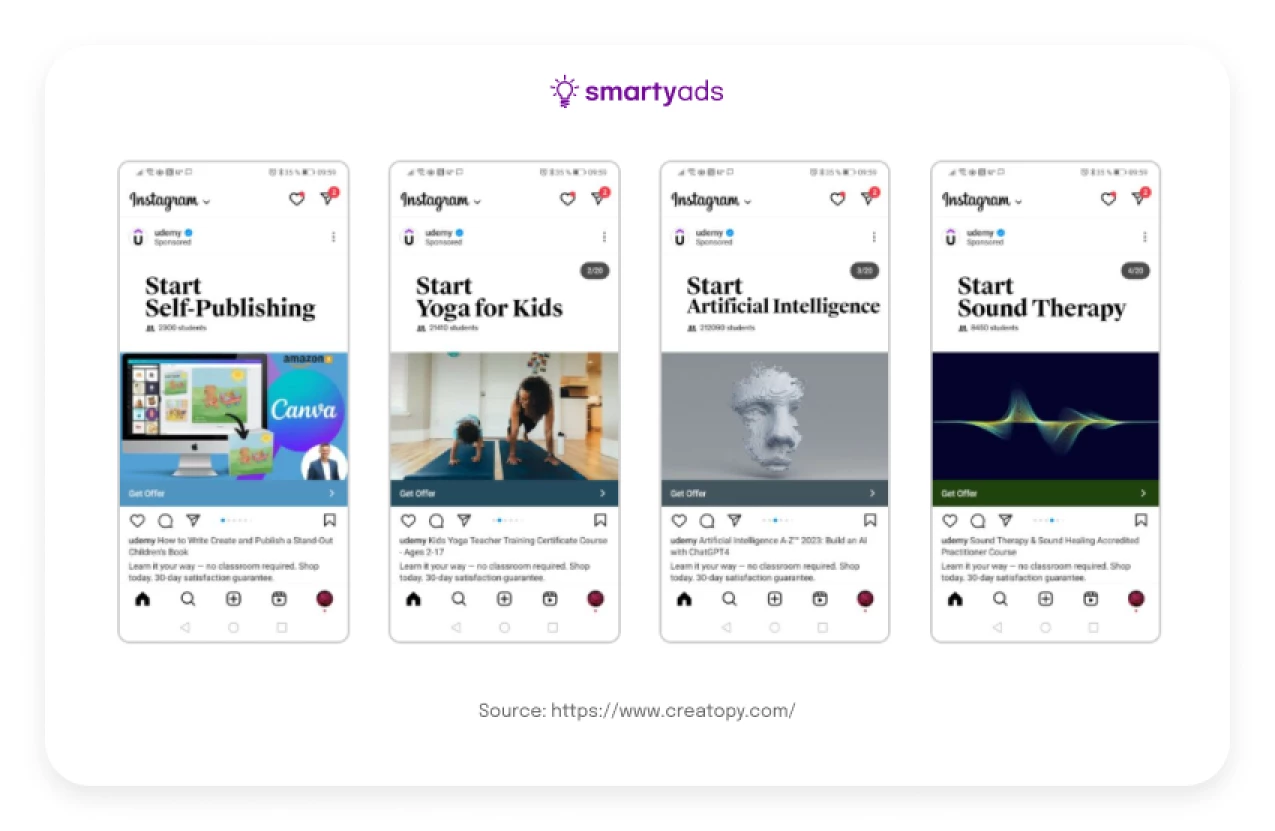
Make joint campaigns
Now, let’s review some of the most popular brand awareness examples with joint campaigns. Joint social media campaigns involve two or more companies collaborating on a campaign. For example, two beverage companies might create a joint social media campaign to promote their products.
Example — Otta and Superside on Instagram
Otta collaborated with Superside to craft over ten motion graphic carousels, each tailored to their expanding markets and job categories. This approach not only enhanced their brand identity but also drove increased awareness among new audiences.
Make sure to use vivid visuals with bright colors and short messages that grab attention instantly. Don’t clatter your ads with too many details that divert the gaze of the viewer from the main message or call to action.
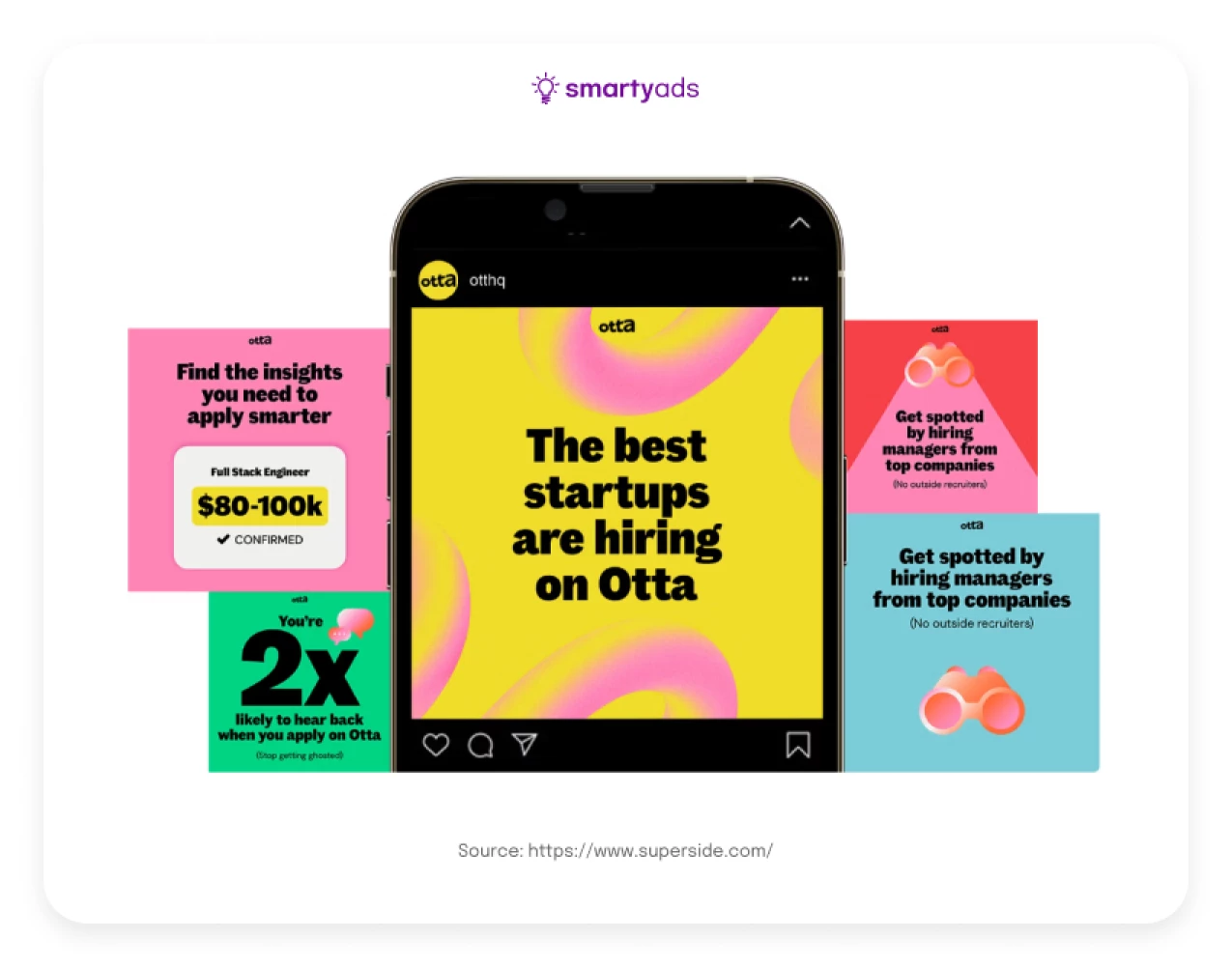
Tap into co-branding
Co-branding is similar to joint campaigns; however, in this case, the partnership might be used even by companies operating in different industries. This is a kind of cross-promotion when two or more companies promote each other's products or services.
Example — Starbucks & Spotify
For example, Starbucks and Spotify partnered to create an agreement that gives Spotify users a chance to win a free drink from Starbucks; for this, users must have installed Spotify and Starbucks apps.
This way, Starbucks raises loyalty for existing audiences and gives a chance to taste the coffee for free to those who have never tried it at Starbucks. Such brand awareness ads worked wonders for attracting new customers.
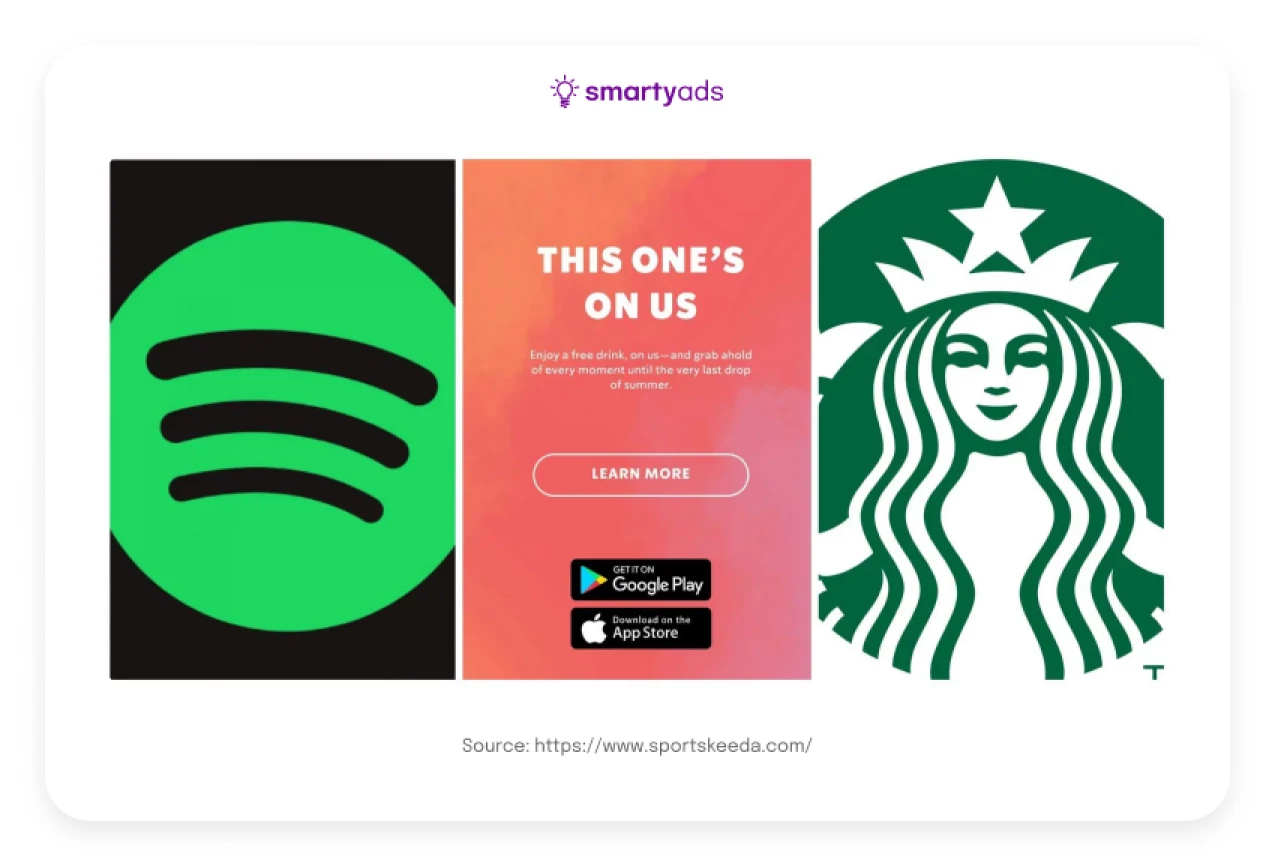
Embrace sponsorship
Sponsorship implies that one company sponsors an event or activity organized by another company. For example, a sports drink company might sponsor a marathon organized by a fitness clothes company. Below are some brand recognition examples.
Example — AliExpress and Euro 2024 Germany
One of the best brand awareness campaigns that goes to the masses is done by AliExpress.
AliExpress, like many other known retailers, is regularly featured as a sponsor of UEFA and the Olympics. By leveraging billboard ads like this in crowded places, the company builds trust and credibility along with global-scale awareness.
This strategy will best suit companies striving to establish themselves as leaders in their industry or those aiming to increase awareness among new audiences (in this case, AliExpress is lifting its brand in the international arena).
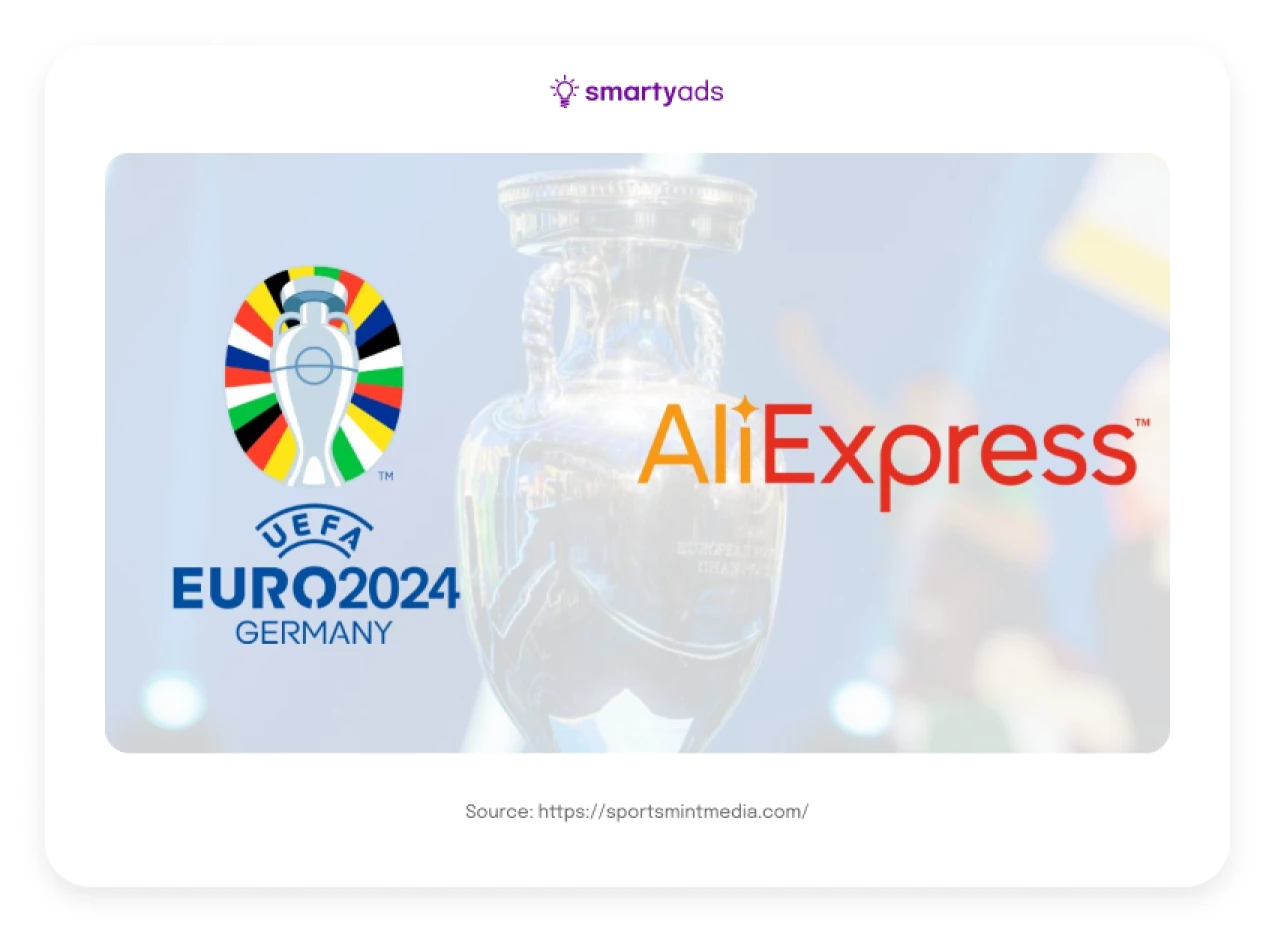
Use affiliate marketing
Affiliate marketing requires one company to promote another company's products or services in exchange for a commission. The larger the network of partners, the larger the potential awareness.
Example — Wirecutter
Wirecutter is a website that places links to other companies on their website and earns a commission from purchases. For users, it guarantees that those advertised goods were thoroughly tested and tried.
So, how to tap into it? In the first place, you can ally with some partners who will be placing your links on their websites by opening your own affiliate program.
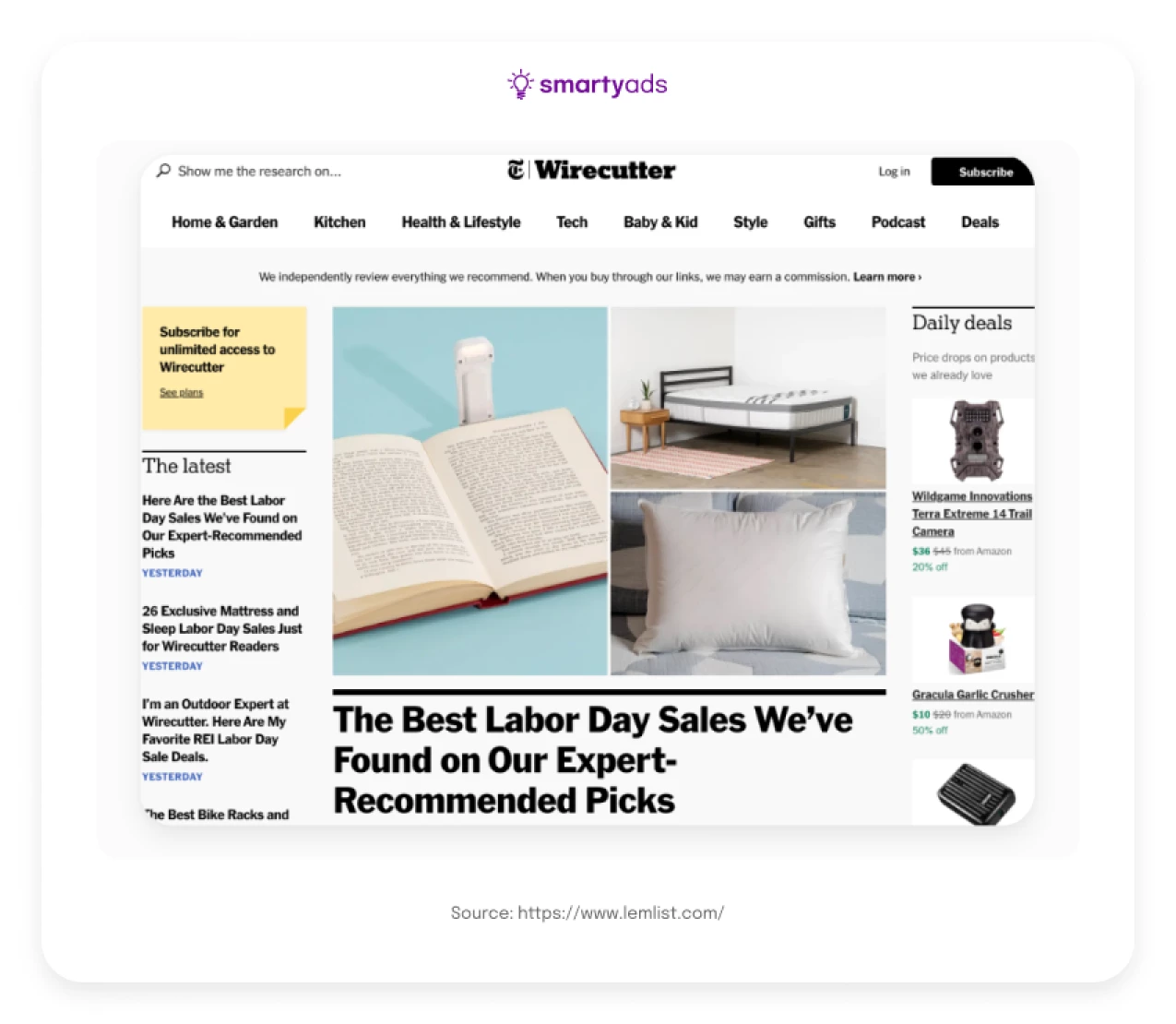
Guest blogging
Guest blogging is a content marketing strategy where businesses write blog posts for other websites in their industry or niche. Guest blogging is an excellent opportunity for building brand awareness, so don't neglect paid sponsored publications in large and reputable media sources.
Example — TMobile and Adweek
One of those examples of brand awareness campaigns that work is implemented by TMobile. TMobile produced a sponsored publication on Adweek in the niche they specialize in — mobile trends. Such publications keep them at the forefront of marketing. By sharing their expertise on other blogs, TMobile can establish itself as a thought leader in its industry.
Reach new audiences: By guest blogging on other websites, businesses can reach new audiences that may not be aware of their company. This can help to improve brand awareness and attract new customers.
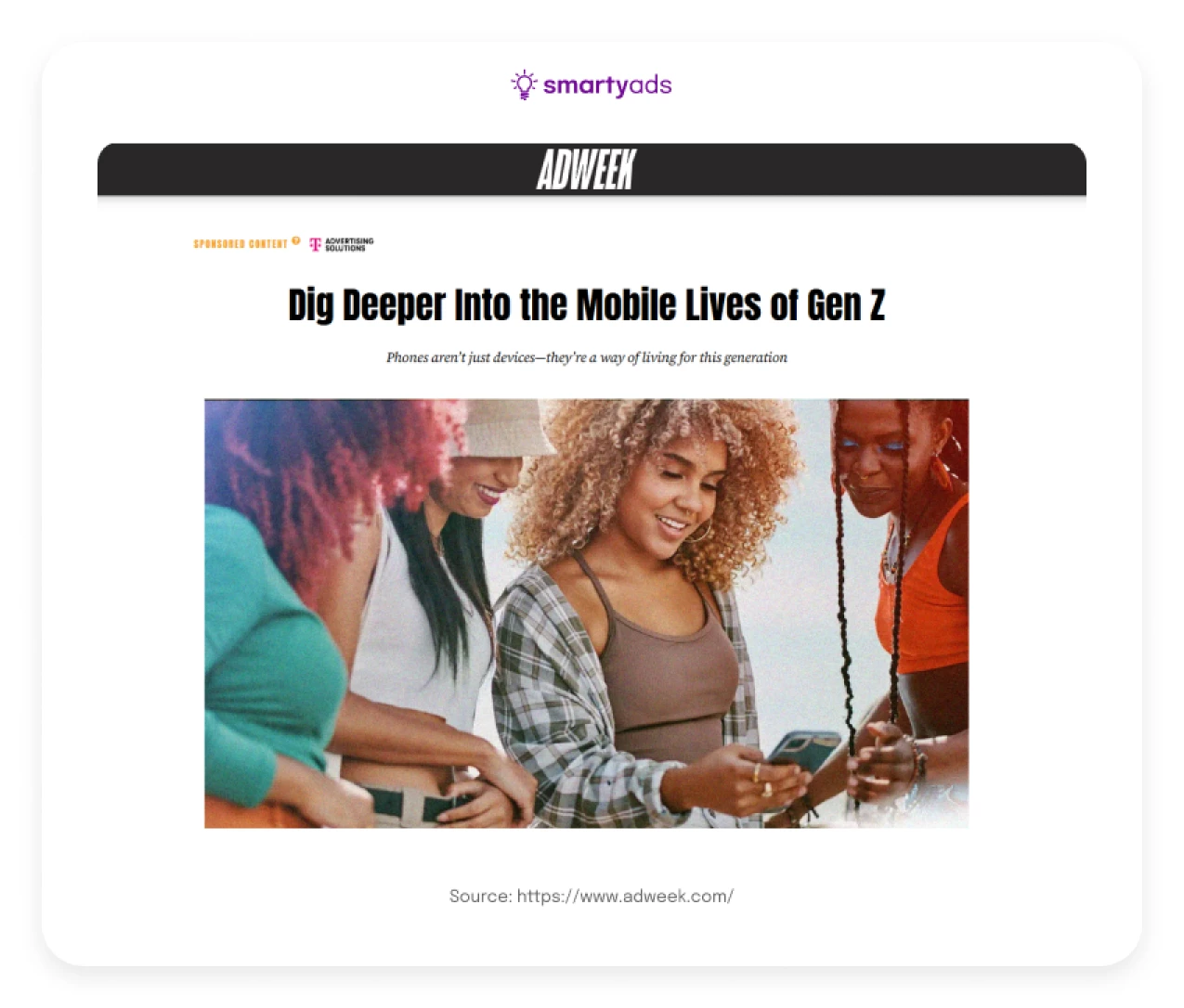
Explore podcasts
Podcasts are audio shows that people can listen to on the go, making them a convenient and engaging way to consume content. Companies can create their own podcast to share their expertise, display their products or services, and connect with their audience.
It's important to mention that podcasting is not one of the completely reliable examples of "increasing brand awareness." People don't listen to podcasts to hear a commercial offer; they do it to be entertained or to learn something new that matters to them. Podcasts can help businesses attract new audiences that may not be available through other marketing channels.
Example — Joola
A good example of using podcasts as a platform to build brand awareness is Shopify's sponsorship of a weekly podcast that can be listened to on three different platforms. Sports Company Joola used it to tell its own story of success.
Just keep in mind that everyone is listening (or watching) to get interesting and informative content from you. Make interesting and informative content your priority; informing everyone about your company and product should come second.
This is especially relevant to Shopify since their platform is designed to help small businesses make money. They talk about this very unobtrusively in their releases.
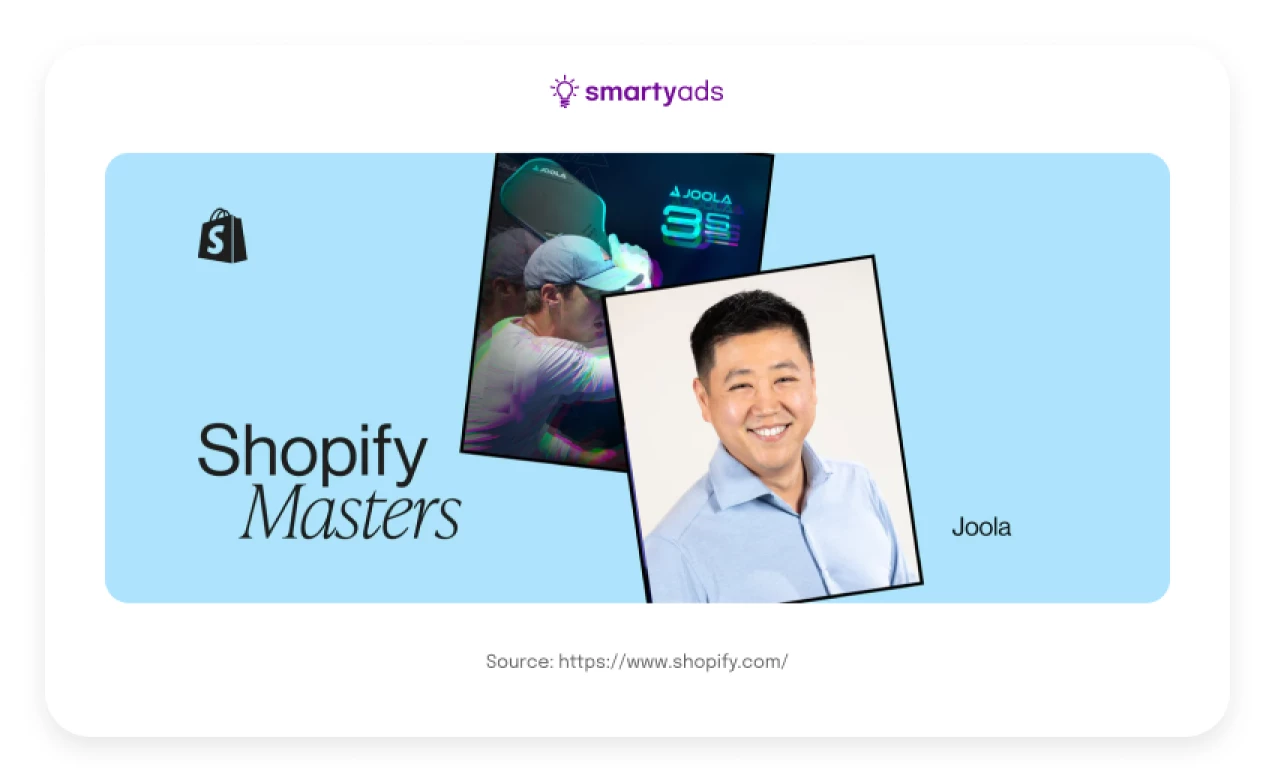
Some of the tips for newcomers in podcast-making:
- Focus on Education. Offer actionable insights on topics like SEO for online stores, optimizing checkout processes, or creating compelling product pages. Bring in expert guests like successful Shopify store owners, industry leaders, or Shopify app developers to share practical advice.
- Use a Conversational Yet Professional Tone. Keep the tone friendly and accessible but professional to build trust and maintain credibility. Avoid jargon unless it’s clearly explained.
- Use storytelling to make technical or business-oriented topics more engaging.
- Showcase Success. Highlight real success stories of Shopify merchants, emphasizing strategies and tools they used to grow their businesses. Include a mix of small and large business examples to appeal to a wide range of listeners.
- Align the podcast's visuals, language, and tone with Shopify's brand identity. Use consistent branding in episode titles, artwork, and descriptions.
Video content
Brand awareness ads examples would not be complete without videos. There are 244.4 million digital video viewers in the US. 91% of consumers want to see more online video content from brands. You can create branded video content to showcase your products or services, share your company values, and provide valuable information to your target audience.
Branded videos can be shared on social media, websites, and other digital platforms to raise awareness and attract new customers.
Video, among other things, can also be a great way to measure a brand awareness campaign. If your brand has, say, a YouTube channel, and there's some video content that's regularly posted, but it's not very popular, that could mean that your awareness is not yet high enough, and you need to take steps to increase it.
Example — Boyd
Boyd uses close-up shots of the tapes and detailed 3D animations of how they’re made to highlight their expertise and quality. The video builds trust in their products and emphasizes that Boyd is a reliable partner for innovative medical adhesive solutions.
Here are some tips for creating a memorable video advertising campaign:
- Keep it short and sweet. Attention spans are short, so keep your video ad short and to the point. A 30-second ad is usually a good length to capture attention and convey your message.
- Use eye-catching visuals. High-quality visuals, such as stunning images, animations, or video clips, will capture viewers' attention and keep them engaged.
- Make it memorable. A memorable video ad can help to increase brand awareness and leave a lasting impression on viewers. Use creative concepts, unique visuals, and a catchy soundtrack to make your ad stand out from the crowd.
- Tell a story. Storytelling is a powerful way to connect with viewers and evoke emotions. Use storytelling to convey your message and build an emotional connection with your audience.
- Include a clear call to action. A clear call to action at the end of your video ad can encourage viewers to take action, such as visiting your website or purchasing. Make sure your call to action is clear and concise.
These tips will also work for other awareness campaign ideas.
For example, collaborations with influencers or educational videos. You may be able to change the length of your video in some cases, but otherwise, all of these tips are still relevant.
Native ads
Native advertising is designed to match the look and feel of the platform it is displayed on, making it less intrusive and more engaging for the audience. Native advertising can be a great addition to your brand awareness strategy.
Native advertising can take many forms:
- Sponsored content on social media: Facebook and Instagram are popular platforms for sponsored content. Sponsored content appears in the user's feed just like any other post but with a "sponsored" tag. The content is designed to match the platform's look and feel, making it more engaging and less intrusive.
- Sponsored articles: Many online publications offer sponsored articles for businesses to promote their products. These articles appear on the publication's website and are written in a tone and style that matches the publication's.
- In-feed ads: In-feed ads are native ads that appear within a website or app's feed. They blend in with the content and can take the form of an image, video, or text.
- Native video ads: Native video ads appear on social media platforms like Twitter and Facebook and other video platforms like YouTube. These ads are designed to look and feel like the surrounding content, making them less disruptive to the user experience.
Example — amusement park and Snapchat
A contest from an amusement park and Snapchat. In 2015, Cedar Point Amusement Park held a contest where participants had to take a screenshot of a ghost on Snapchat. Those who pulled it off got a coupon to visit the park or a small prize. By the way, this contest also improved Snapchat's performance — the number of unique users increased to 144,000 per day.
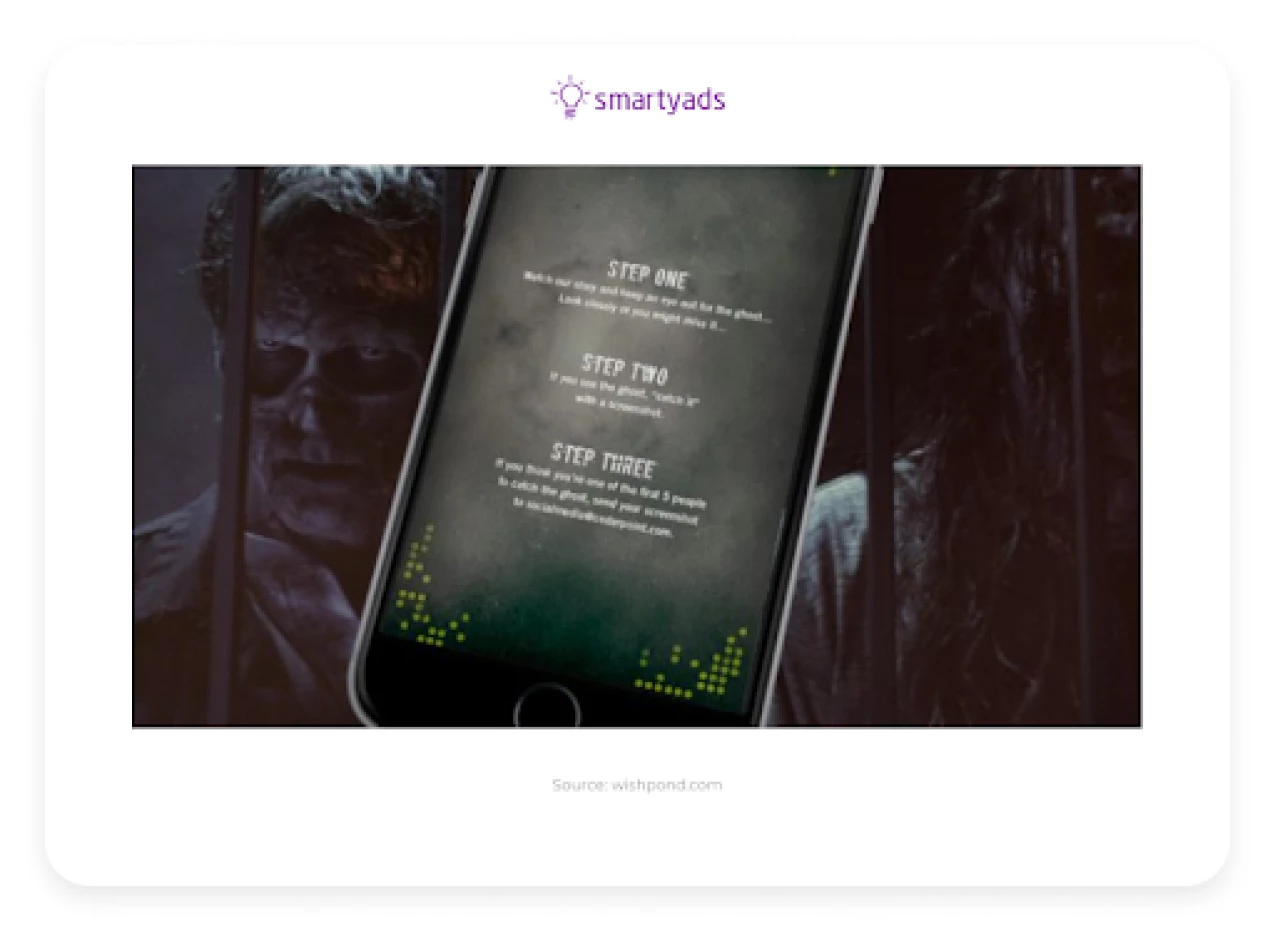
Let’s review some different types of awareness campaigns, such as Hanami at Home. In 2022, MGM National Harbour Hotel, located in Maryland, partnered with the Washington Post to create a beautiful interactive local experience to celebrate the cherry blossom season. "Hanami" is a traditional Japanese custom of admiring the beauty of blooming flowers, and this native advertisement allowed Washington Post readers to do just that.
Using augmented reality technology, readers could enjoy "Hanami at home" and watch the cherry blossoms bloom at virtually every stage of growth.
Some tips for native campaigns:
- Start with a question to spark curiosity and engage your audience. Consider mentioning your target group directly — people are more likely to click if they feel the ad speaks to them. Keep your message clear; no one will click if they don’t understand the point.
- Make sure your ad content aligns with the offer page. Write a brief description that encourages users to click and visit the offer. If your headline asks a question, provide the answer here. Adding a clear call-to-action (CTA) button can boost user engagement and improve click-through rates (CTR).
- Use high-quality, high-resolution visuals sourced from stock platforms like Shutterstock or Getty, or create custom designs to make them unique.
To sum it up
Brand awareness advertising is important because it is an essential component of trust to your company. It can generate customer loyalty, drive sales and revenue, and build a company’s reputation.
Sometimes, it can be difficult to measure brand awareness, but this part of the marketing strategy is still one of the key aspects of business promotion in the online environment and, therefore, should not be neglected. It is a critical component of any successful marketing campaign.
By increasing it, businesses can establish themselves as leaders in their industry and create a lasting impression in the minds of consumers. We hope that today’s examples have been useful for you and that you can leverage them to create your own impressive campaigns.
Increase your brand awareness with SmartyAds DSP! Register and start a campaign today!
FAQ
Great campaigns tap into shared values or memorable storytelling. For example, Unilever's use of AI-powered influencers (like those in Dove's viral scents campaigns) creates deeply shareable moments—25% of campaign lift comes from authentic, emotion-driven storytelling.
Programmatic platforms like SmartyAds DSP allow advertisers to target specific segments with brand-first messaging using optimized creatives and frequency controls—great for sustained awareness boosts across digital touchpoints.
It depends on the objective—short bursts of 2–4 weeks can create buzz for launches, while ongoing campaigns lasting 3–6 months are better for long-term brand recall and loyalty building.
Yes—KPIs like brand recall surveys, social mentions, share of voice, direct traffic growth, and sentiment analysis can quantify awareness impact alongside engagement metrics.

